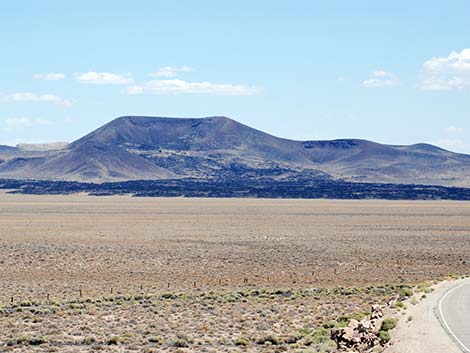
Rocks and Geology Around Las Vegas

Igneous Rocks are formed when magma (hot, molten material from deep within the earth) cools. When it cools at the surface after pouring out of a volcano, it typically forms lava. When magma explodes out of a volcano, it can form fragmented (pyroclastic) rock, ash-flow tuffs, and volcanic glass (obsidian). When magma cools slowly deep underground, it forms granite.
Igneous rocks are fairly common east and south of Las Vegas. Out at Lake Mead, the dark-colored mountains along the Colorado River are volcanic. Granite is uncommon in southern Nevada, but occurs out in the Gold Butte Region (north of Lake Mead along the Nevada-Arizona border).
Lava. Molten rock inside the earth is called magma, and when magma spills out on the surface, it is called lava. Thus, lava is the material that flows out of a volcano. Around Las Vegas, look for lava around Lake Mead NRA., along Interstate-15 south of town, and in Mojave National Preserve. Fortification Hill (banner photo) on the Arizona side of the lake is an old lava flow, and the mountains along the north side of Lake Mead are volcanic. Recent lava flows, cinder cones, and lava tubes can be seen in Mojave Preserve. |
|
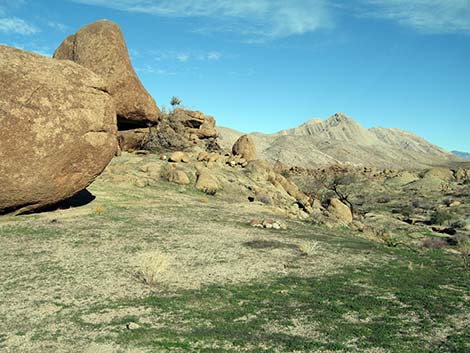 |
Granite. When magma cools slowly deep underground, it forms large crystals that become granite. There is little granite around Las Vegas, but look for granite out in the Gold Butte Region and down south in Avi Kwa Ame National Monument. |
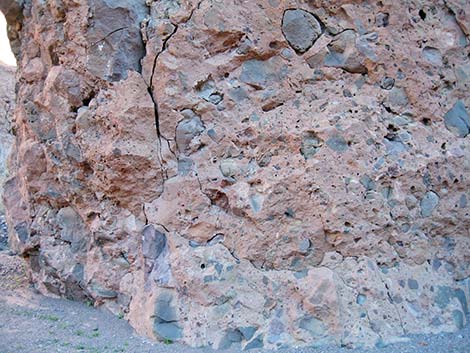 |
Pyroclastic Rock. When ash and other fine materials are violently blasted out of volcano, they can flow down the side of the volcano like a torrent of water picking up other rocks along the way, much the way a flashflood picks up rocks and debris. When the mass of moving ash cools, it can solidify, holding the other rocks in place. Around Las Vegas, look for examples of pyroclastic rock along the north side of Lake Mead, particularly along the walls of Cleopatra Wash. |
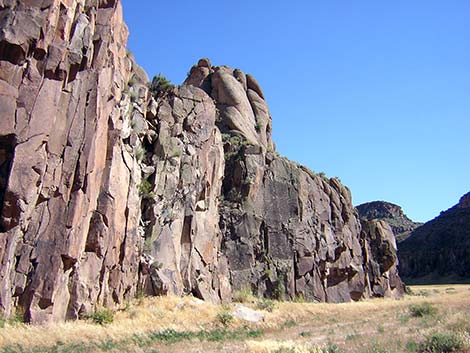 |
Ash-fall and Ash-flow Tuff. Tuffs are rocks formed from volcanic ash. If the ash cools in the air as it falls, it can eventually form soft rock, but if it is hot when it stops moving, the ash particles can weld together to form very hard rock. The proposed nuclear waste repository at Yucca Mountain was to be built in welded tuff formations. |
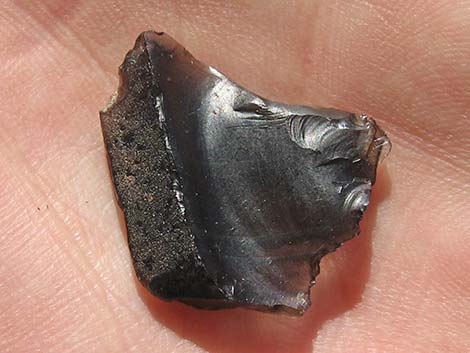 |
Volcanic Glass (Obsidian). When high silica content lava (>70% SiO2) cools rapidly, it can harden without forming crystals, producing obsidian. Look for obsidian along the edges of lava flows. Obsidian was prized by native peoples for use in cutting tools and arrowheads (points). These people collected large pieces of obsidian from several locations around southern Nevada and carried it with them in their travels. When they stopped, they often pulled out a chunk of obsidian and started knocking off chips to make tools. Hikers often find these small chips scattered on the ground, and sometimes find the actual tools. Note that while raw obsidian is just a rock, worked obsidian (flakes, points, other tools) are protected by law. Enjoy them, but put them back the way you found them. |
Note: All distances, elevations, and other facts are approximate.
![]() ; Last updated 240331
; Last updated 240331
| Rocks and Geology | Hiking Around Las Vegas | Glossary | Copyright, Conditions, Disclaimer | Home |
